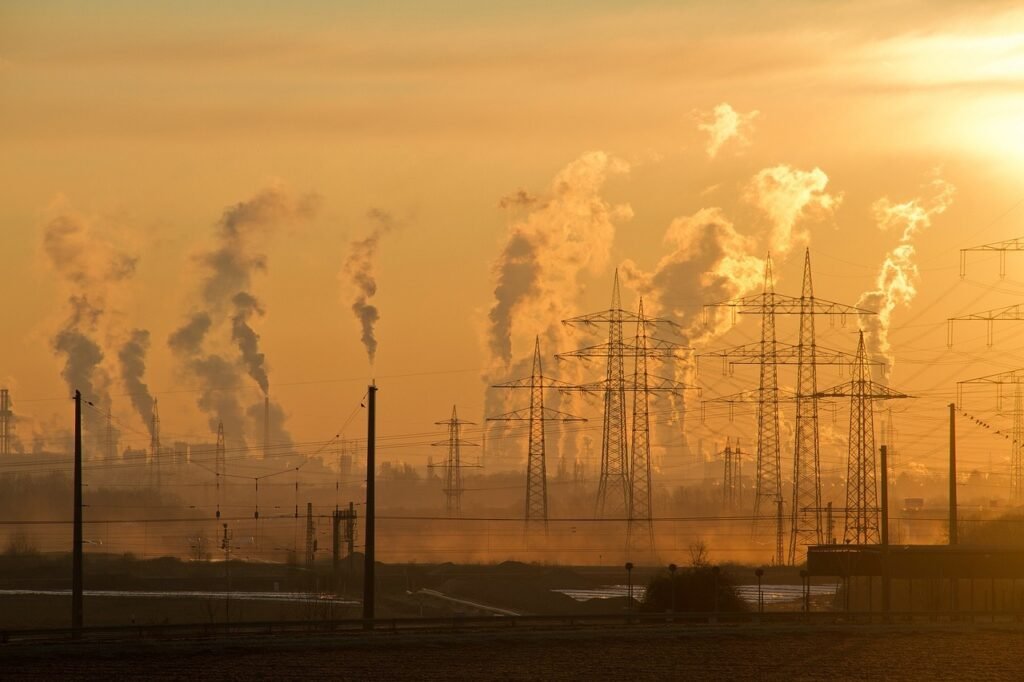Every day, the average person in the U.S. throws out over four pounds of garbage. This is a major part of the world’s waste issue. But we have the power to help fix it, starting with what we decide to put in our shopping carts

It’s important to know about eco-friendly products. Eco-friendly products are made to be kind to the planet. They’re often made from natural or safe materials. Also, they’re made in ways that cut down on pollution.
Key Takeaways
- Understanding eco-friendly products helps consumers make informed choices.
- Eco-friendly products minimize environmental harm.
- Natural and non-toxic materials are often used in eco-friendly products.
- Production methods for eco-friendly products reduce pollution.
- Consumers can significantly reduce their ecological footprint by choosing eco-friendly products.
Types of Products from an Environmental Perspective
Our choices when buying products greatly affect the environment. What we pick can harm nature or help protect it.
The Environmental Impact of Consumer Choices
How products are made, used, and thrown away affects the planet. Sustainable options use renewable resources and keep the environment balanced. Choosing these products supports environmentally responsible brands and helps our planet.
Our choices lead to issues like resource loss, pollution, and waste. For example, picking items with less packaging or made for recycling cuts down on trash.
| Product Type | Environmental Impact | Sustainable Alternative |
| Single-use plastics | Contributes to pollution and waste | Reusable products made from sustainable materials |
| Products with excessive packaging | Leads to unnecessary waste | Minimally packaged or package-free products |
| Non-renewable resource-based products | Depletes natural resources | Products made from renewable resources |
Why Identifying Green Products Matters
Finding green products is more than just avoiding harm. It’s about backing sustainable practices. Environmentally responsible brands work to lessen their environmental impact and support fair supply chains.
“The greatest threat to our planet is the belief that someone else will save it.”
Robert Swan
By picking sustainable options, we tell makers we care about the planet. This pushes more companies to go green, helping the environment.
In summary, knowing how products affect the environment helps us make better choices. By understanding the impact of our buying and finding eco-friendly items, we help create a greener future.
How Consumers Can Identify Eco-Conscious Products
We all have the chance to make a difference by choosing wisely what we buy. With growing concerns about the environment, knowing how to spot eco-friendly products is key.
Recognizing Eco-Friendly Products
Eco-friendly items aim to reduce harm to our planet. To find these, we should look for specific signs and labels.
Recognizing Eco-Friendly Products
Eco-friendly products are made to be kinder to the Earth. They have certain traits and badges that show they’re different.
Common Characteristics of Eco-Friendly Items
These products often have special features. Some common ones are:
- Biodegradable materials: Stuff that breaks down easily.
- Low carbon footprint: Made with less pollution.
- Sustainable sourcing: Uses materials in a way that’s good for the planet.
Navigating Eco-Friendly Labels and Certifications
Labels and badges can help us find eco-friendly items. Some trusted ones are:
- EcoCert: Shows products meet strict green standards.
- Energy Star: Means products use less energy.

Spotting Truly Sustainable Products
Sustainability is more than just being green. It’s about how things are made and used. To find truly sustainable products, we need to look for certain signs.
Key Indicators of Sustainable Manufacturing
Sustainable making means less waste and more saving of resources. Look for these signs:
- Renewable energy usage: Uses clean energy sources.
- Waste reduction: Makes less waste during making.
Verifying Sustainability Claims and Certifications
To know if products are really sustainable, we must check the claims. Look for Fair Trade and FSC (Forest Stewardship Council) labels.
Identifying Recyclable Products
Recyclable items are made to be recycled, cutting down on waste. To spot them, we need to know about recycling symbols and materials.
Understanding Recycling Symbols and Materials
The recycling symbol (♻️) means a product can be recycled. Also, look for “100% Recyclable” to help choose.
Avoiding Greenwashing in Recyclability Claims
Greenwashing happens when companies lie about their products’ green benefits. To avoid it, know the real recycling labels and certifications.
Conclusion
Understanding the environmental impact of our choices is key. By knowing the environmental effects of products, we can make better choices. This helps us pick products that are good for the planet.
Eco-friendly certifications guide us in finding products that are better for the environment. Choosing these products supports companies that care about the planet. This helps us move towards a greener future.
We can all make a positive change by choosing products that are good for the planet. Let’s keep learning about making eco-friendly choices. This way, we can live in a way that’s better for our planet and future generations.
At LANGFOSS, we believe that every product should combine innovation, practicality, and environmental responsibility. By offering smart, eco-friendly, and sustainable solutions for homes and families, we help consumers make choices that are not only convenient but also kind to the planet.
Our mission is to make sustainable living simple and accessible. Every purchase is more than just a product — it’s a step toward a greener, smarter, and healthier future for all.
Recommendations for Improvement
1. Streamline definitions to avoid repetition across sections.
2. Add visual elements such as eco-label icons (♻️ 🌱 🌍) for better reader engagement.
3. Strengthen the conclusion by connecting consumer choices with brand values.
4. Include localized examples or updated statistics to make the article more relatable.
5. Provide a clear call-to-action encouraging readers to support eco-conscious brands.
FAQ
What are eco-friendly products?
Eco-friendly products aim to harm the environment less. They’re made from natural or non-toxic stuff. Also, they’re produced in ways that cut down pollution.
How can we identify sustainable products?
Sustainable products use renewable resources and keep the environment balanced. Look for Fair Trade or FSC (Forest Stewardship Council) certifications. Also, check if they’re made from renewable materials.
What does it mean when a product is labeled as recyclable?
Recyclable products can be turned into new things after use. Look for the recycling symbol (♻️) or phrases like “100% Recyclable” on packaging.
How can we avoid greenwashing when shopping for eco-friendly products?
To dodge greenwashing, seek out specific certifications like EcoCert or Energy Star. Be cautious of vague claims. Also, check the brand’s environmental policies to match their eco-friendly promises.
What are some common characteristics of eco-friendly products?
Eco-friendly products are often natural or non-toxic. They have little packaging and are made with pollution-reducing methods. They also have labels or certifications showing their green credentials.
Why is it important to choose environmentally responsible brands?
Picking eco-friendly brands supports sustainable practices and lessens environmental damage. By backing these brands, we push others towards greener choices, helping our planet.
How can we verify the sustainability claims of a product?
To check if a product’s green claims are true, look for third-party certifications. Research the brand’s environmental policies. And see if it’s made from renewable materials.
